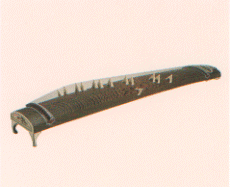The koto is a Japanese traditional musical instrument and the Fukuyama in particular
accounts for 70% of the manufacture of this instrument in Japan. Its excellent sound,
beautiful appearance and gorgeous decoration is brought about by the matured skills of
the "Koto masters".
Capability to play a stringed instrument like the Koto or the Shamisen had been a
requirement during the Bakufu days of the Edo period. The feudal lords of Fukuyama who
spent some time in Edo brought the Kabuki music later from the capital to their local
regions.
This prefecture has also produced outstanding Koto and Shamisen performers. Among them were
Koutou Kuzuhara and Kenkou Yoshizawa who lived and performed during the transition period
from the Bakufu government to the Meiji area and had many students. This increased the
demand for good Koto and Shamisen instruments and led early to the manufacture of these
instruments.
During the early days of the Meiji period the Koto master Keisuke Iwamoto (artist name
Keikin) mastered the traditional techniques and started factory production with father and
son Shinjirou and Masao Makimoto.
The completion of each single Koto finally rests in the hands of craftsmen who mastered
the techniques in dozens of years of practice.
In 1985 this craft has been designated an national traditional craft.
|
 |
